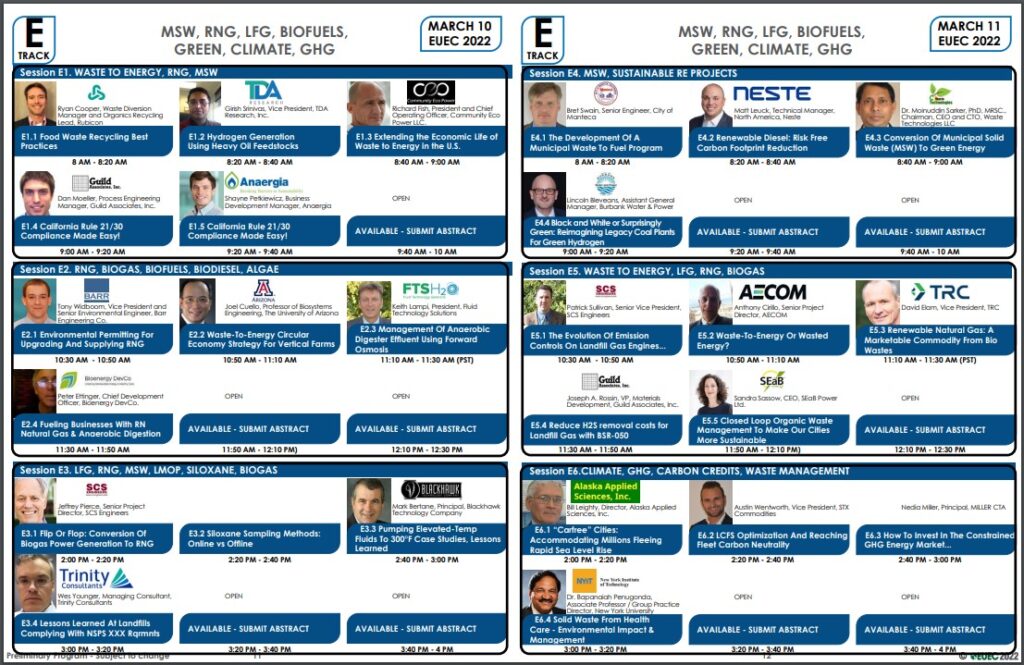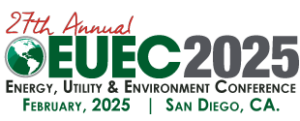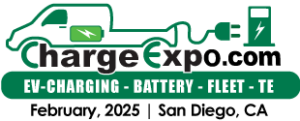EUEC 2022 TRACK E PRELIMINARY PROGRAM
Climate, MSW, LFG, RNG,Biofuels
ACCEPTING ABSTRACTS ON: Waste to Energy, RNG, MSW, RNG, Biogas, Biofuels, Biodiesel, Algae, LFG, RNG, MSW, LMOP, Siloxane, Biogas, MSW, Sustainable RE Projects, Coal Plants and Green Hydrogen, Waste to Energy, LFG, RNG, Biogas, Climate, GHG, Carbon Credits, Waste Management
BACKUP EUEC 2022 VIRTUAL Speakers have the option to present & attend remotely using EUEC Virtual.
OPEN SLOTS AVAILABLE TO SUBMIT ABSTRACTS TO SPEAK & MAKE 20-MINUTE PPT PRESENTATION.

Session 1 (8 AM – 10 PM) NETWORK IN EXHIBIT AREA
Session 2 (10:30 AM – 12:30 PM) LUNCH (12:30 PM to 2 PM )
Session 3 (2 PM – 4 PM) RECEPTION (4 PM – 6 PM)
Session 4 (8 AM – 10 PM) NETWORK IN EXHIBIT AREA
Session 5 (10:30 AM – 12:30 PM) LUNCH (12:30 PM to 2 PM )
Session 6 (2 PM – 4 PM) RECEPTION (4 PM – 6 PM)

